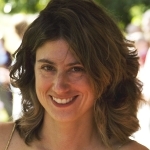 (Host) India and northern New England sit on opposite ends of the globe.
(Host) India and northern New England sit on opposite ends of the globe.
But former journalist and commentator Suzanne Spencer Rendahl has
discovered that students in both regions share a common classroom via
the internet, thanks to Silicon Valley-based Khan Academy.
(Spencer
Rendahl) When I first saw the nonprofit Khan Academy founder, Salman
Khan, interviewed a couple years ago, I was intrigued. Khan, an MIT and
Harvard graduate, had wanted to tutor his younger cousins long-distance.
They liked the tutorials Khan recorded and put up on YouTube, because
they could go back and review them whenever they needed. Lots of other
people apparently agreed, because his bite-sized lectures – usually no
longer than 15 minutes – went viral.
In 2008, Khan quit his day
job and made it his mission to provide "a free world-class education for
anyone anywhere," with tutorials covering everything from chemistry to
art history. You can even watch a lecture by basketball star LeBron
James, with the title "If Earth’s history were a basketball game, when
did humans appear?"
But the biggest focus is on math. The Khan
Academy philosophy is simple: master one concept and then move onto the
next. Learn from your teacher, but use the video tutorials and equation
hints if you need them. You can follow a constellation of exercises that
start at basic addition and go through calculus.
Early one
morning last year, my daughter and I – still in our pajamas – sat down
at our laptop. We created an account, hit play, and listened to Khan’s
reassuring voice as he drew multi-colored circles and number lines on a
digital blackboard to demonstrate basic addition. My daughter already
knew how to add single-digit numbers, but it was the different routes to
the correct answer he presented that opened doors for her. She went on
to do a bunch of problems, and then we watched the next video.
It
became a mixed experiment. She progressed over time, learning how to
locate negative numbers and decimals on a number line and starting long
addition. But then she grew tired of the videos, didn’t want to hear my
explanations and pounded the desk in frustration if she made a mistake.
This
was a powerful reminder that nothing can replace a good teacher. Now
when she comes home from school excited about something she’s learned,
we log in and solve a few related problems. After she gets a bunch
right, she ventures into newer territory. This isn’t part of her school
curriculum – yet – but more and more public and private schools in the
region are using Khan Academy.
And so are schools in places like
India that face teacher and textbook shortages. The New York Times
recently reported that several such schools using Khan Academy have
decreased absenteeism and improved test scores.
Now six million
students worldwide log into Khan Academy each month to solve problems
and watch tutorials translated into at least 24 different languages,
including Hindi, Tamil, Urdu, Swahili, and Chinese.
So although
my second-grader spends most of her day in a class of 16 – which is her
entire grade – in a K through 8 school of 231 students, she’s also a
member of a truly global classroom.